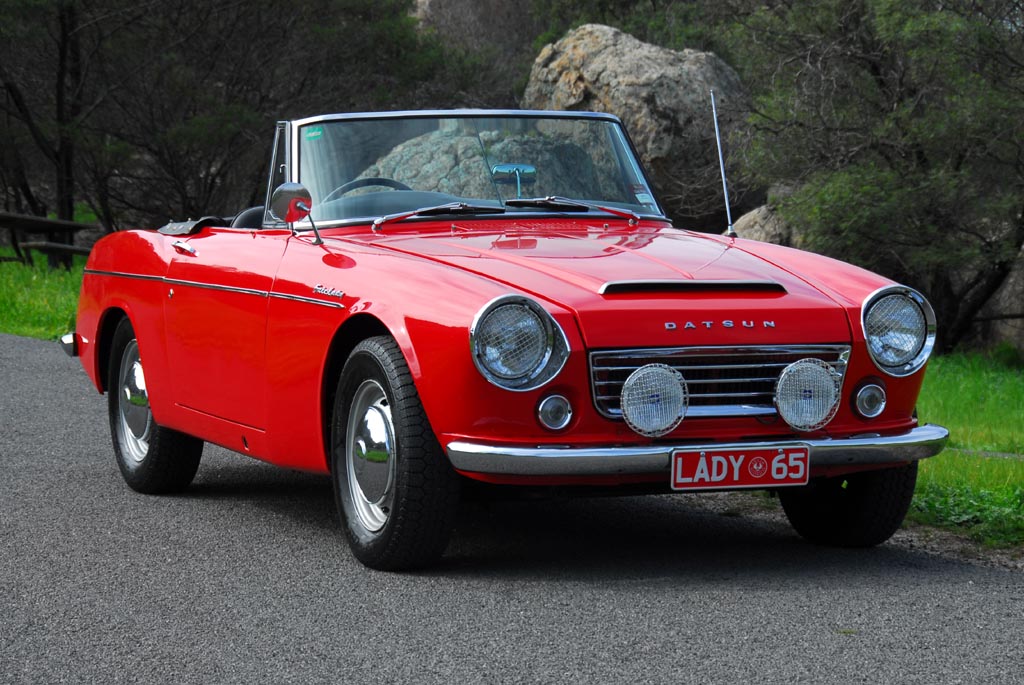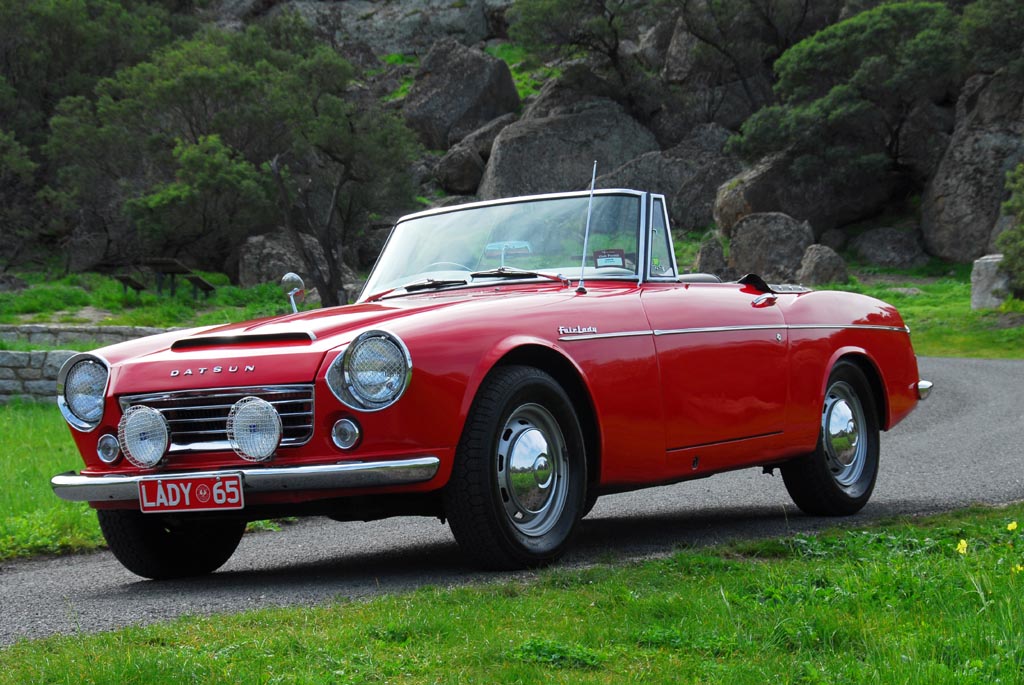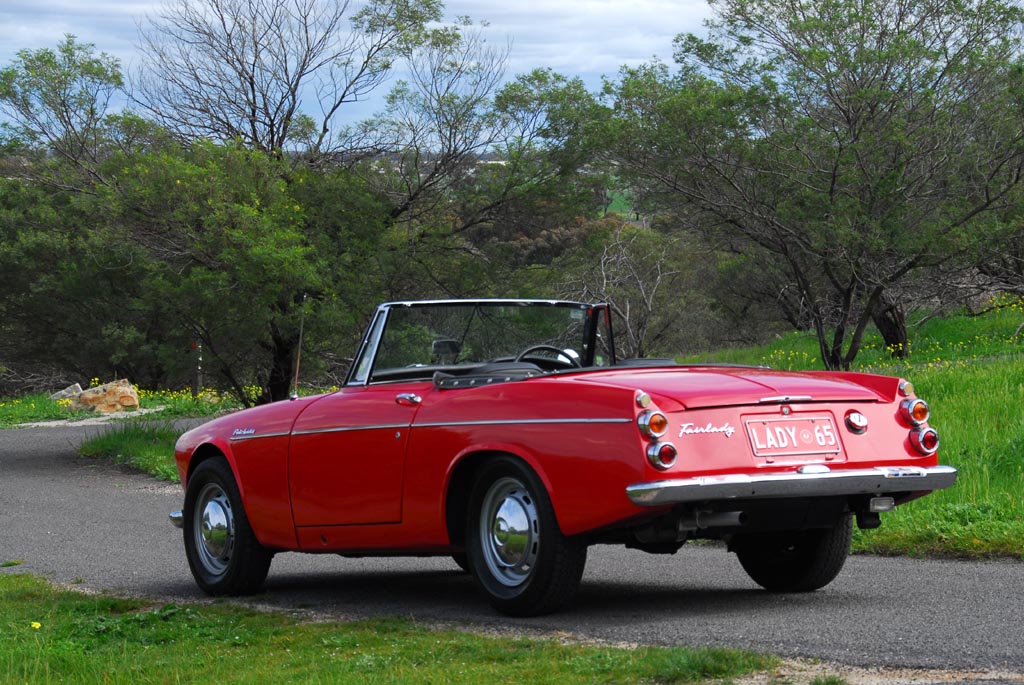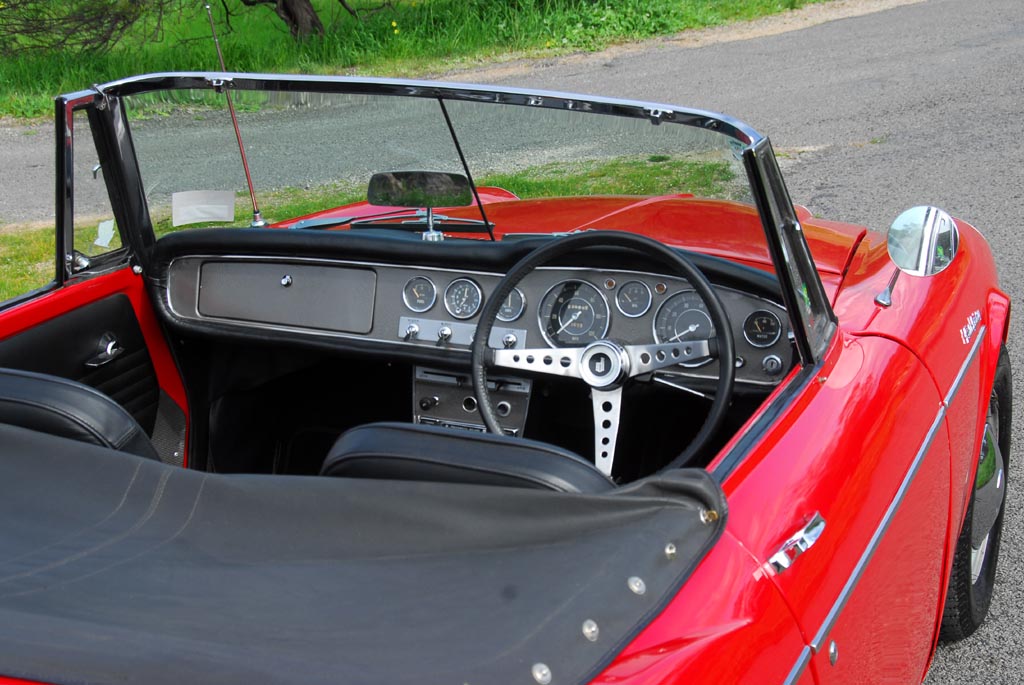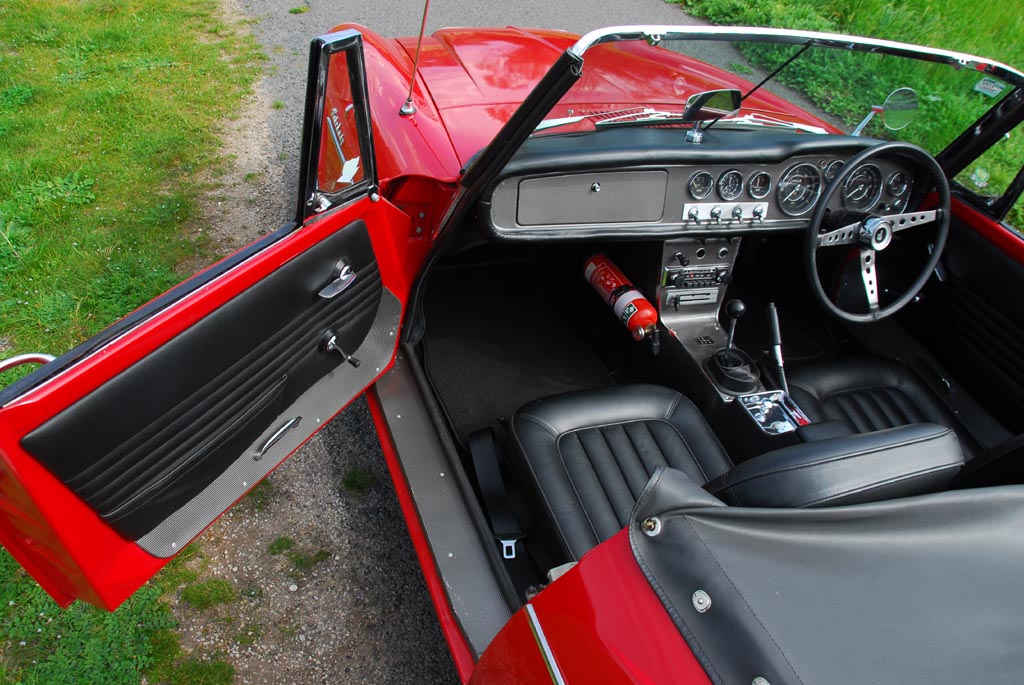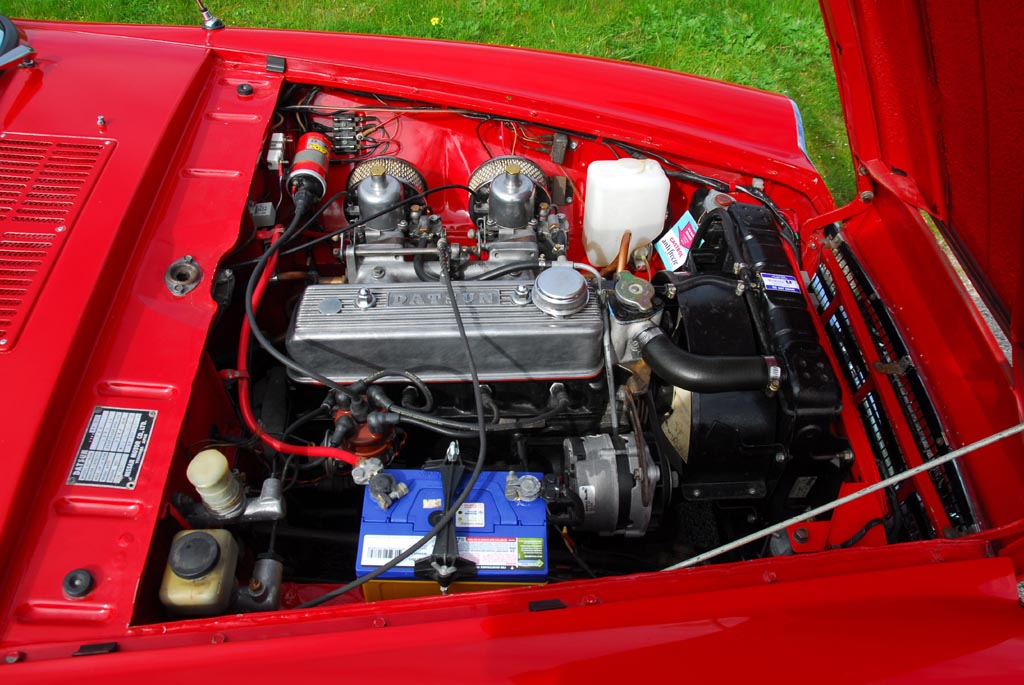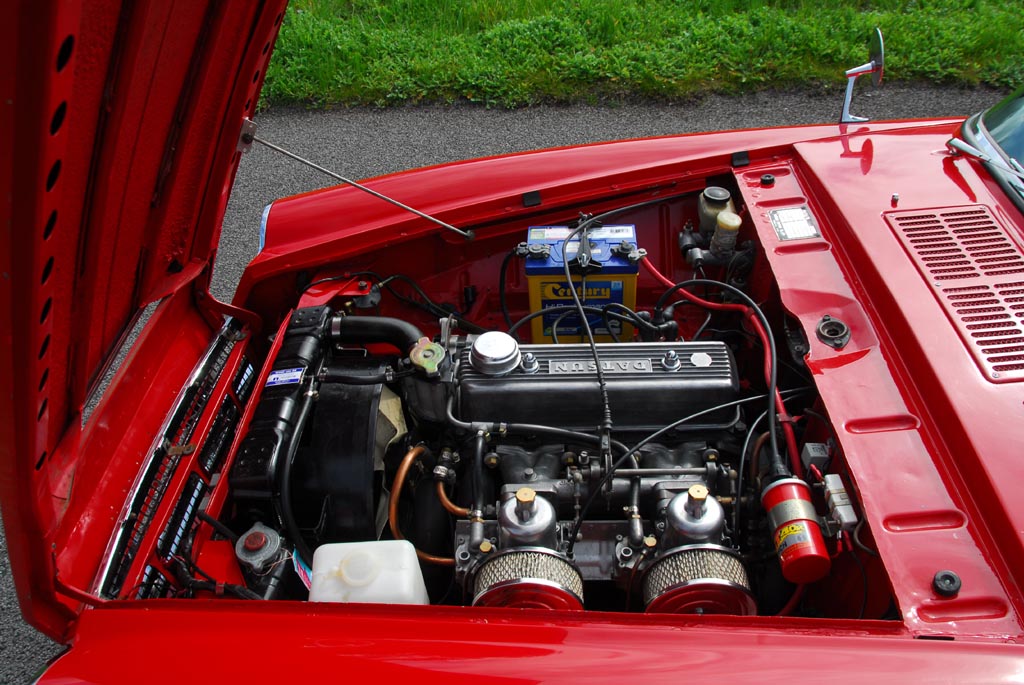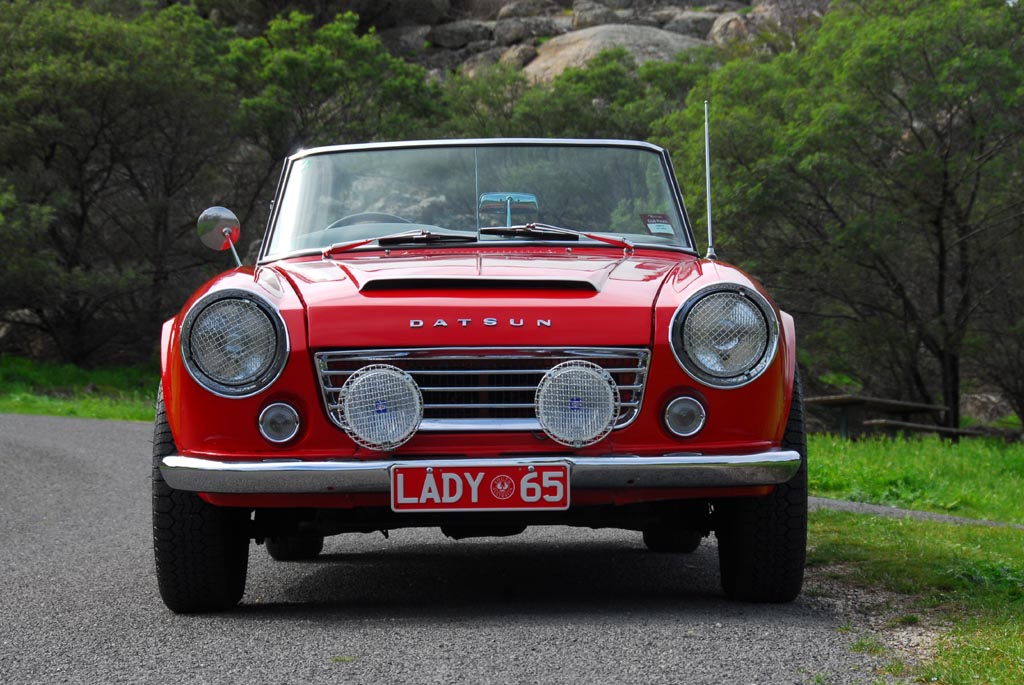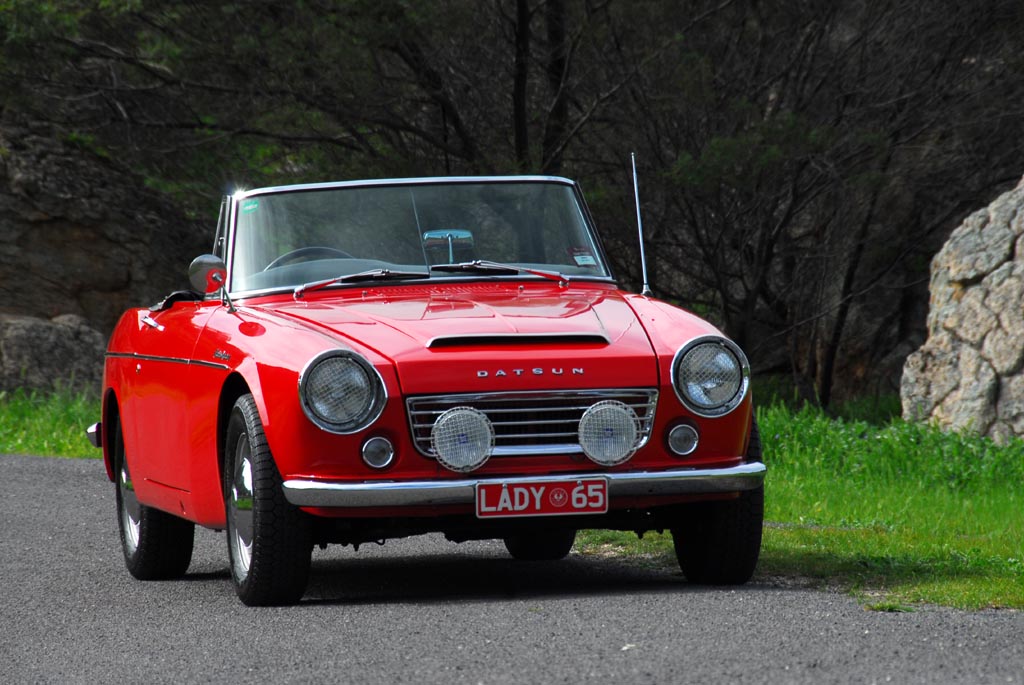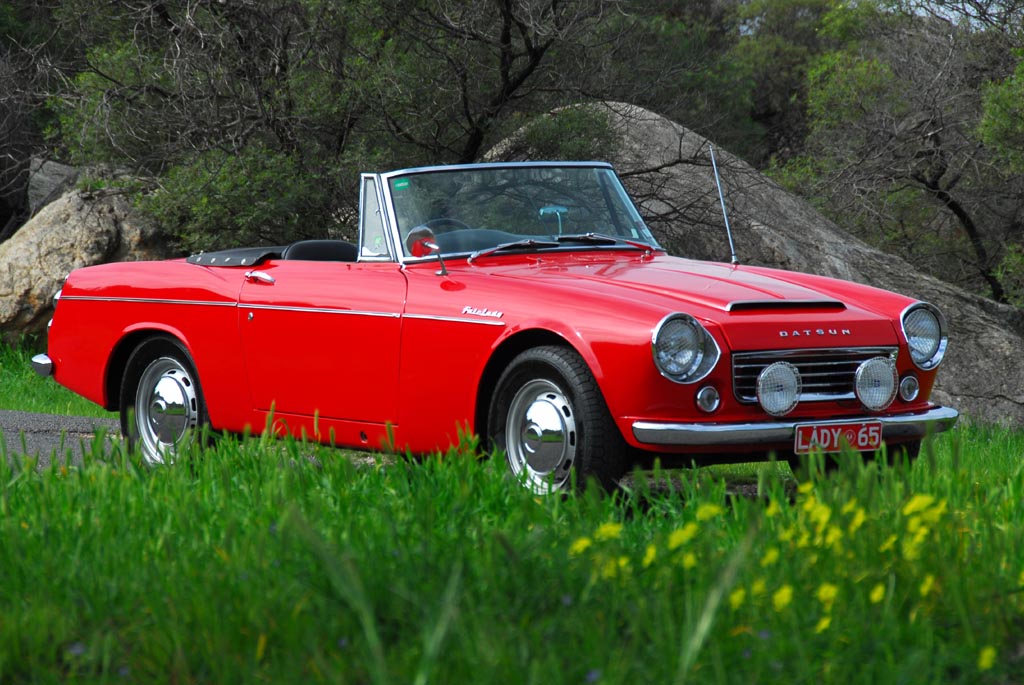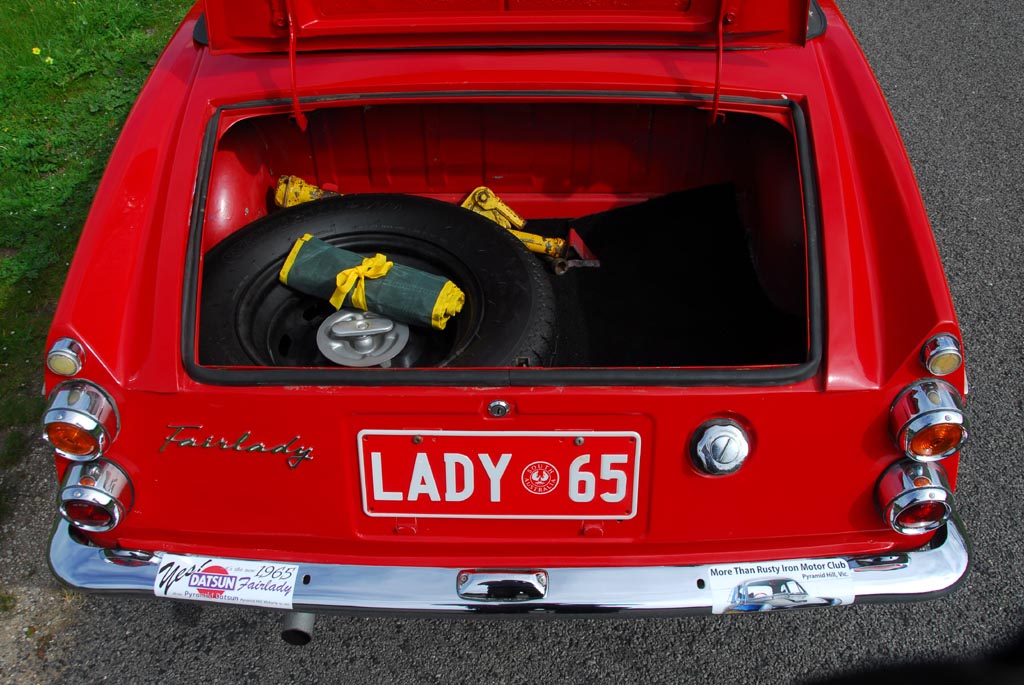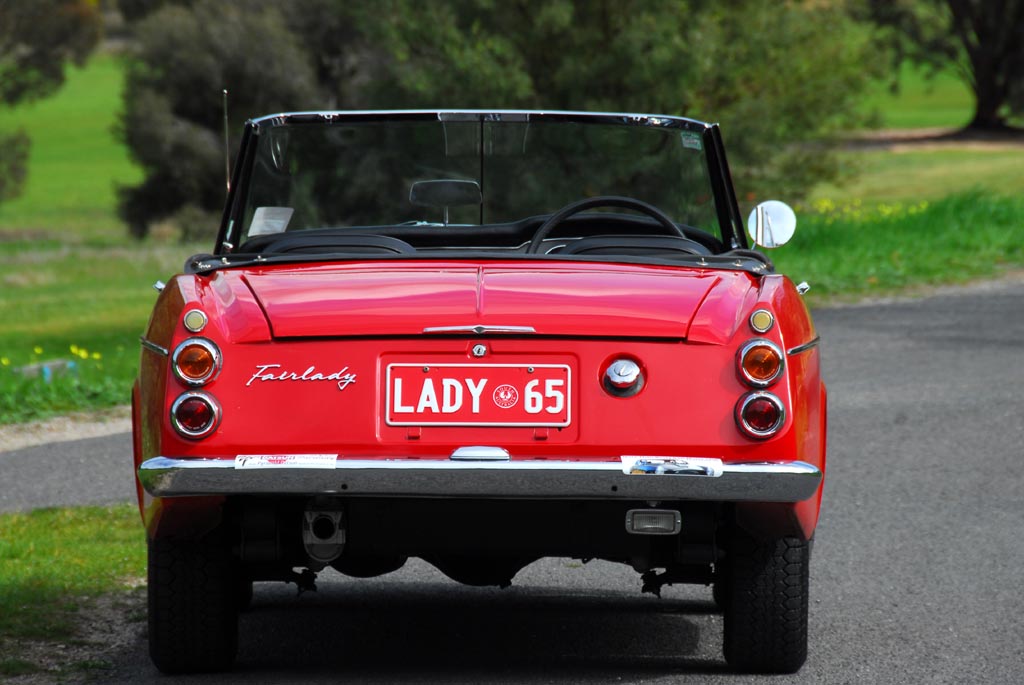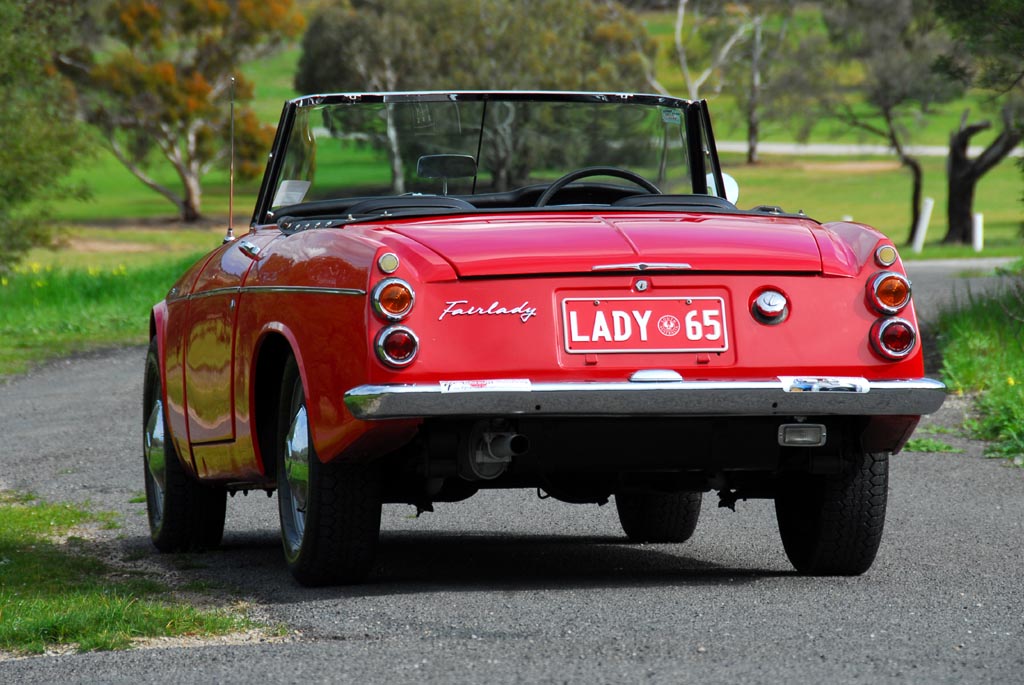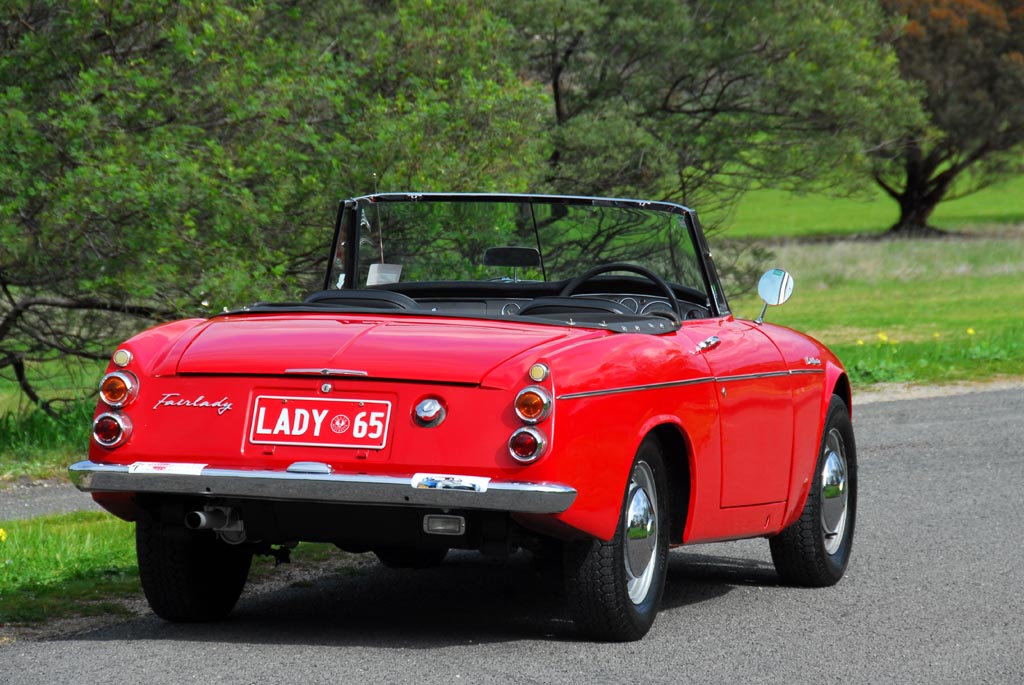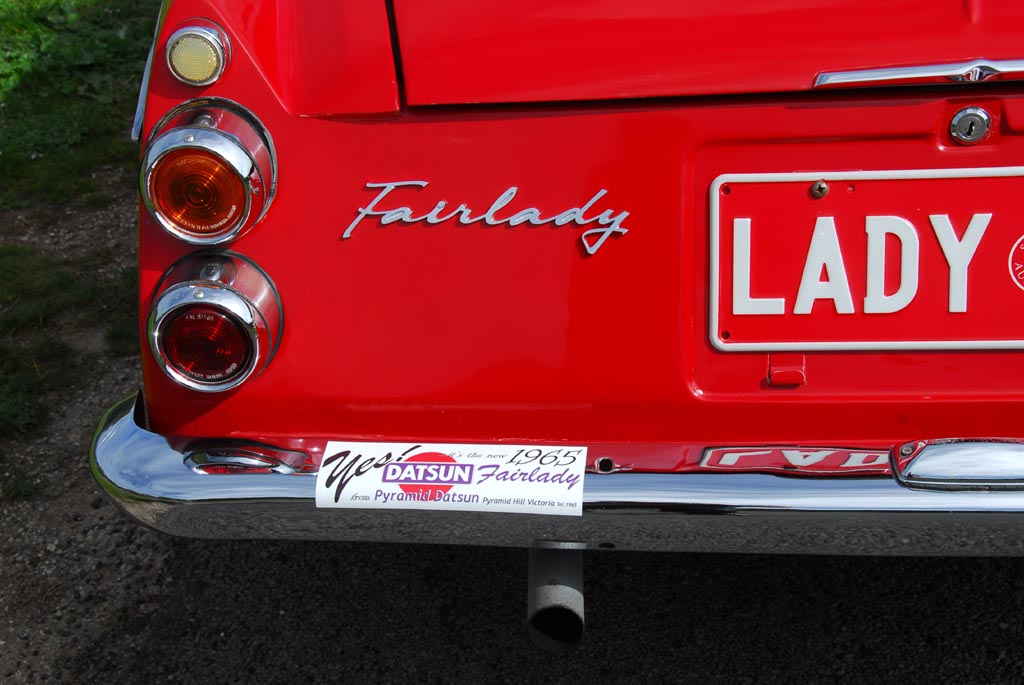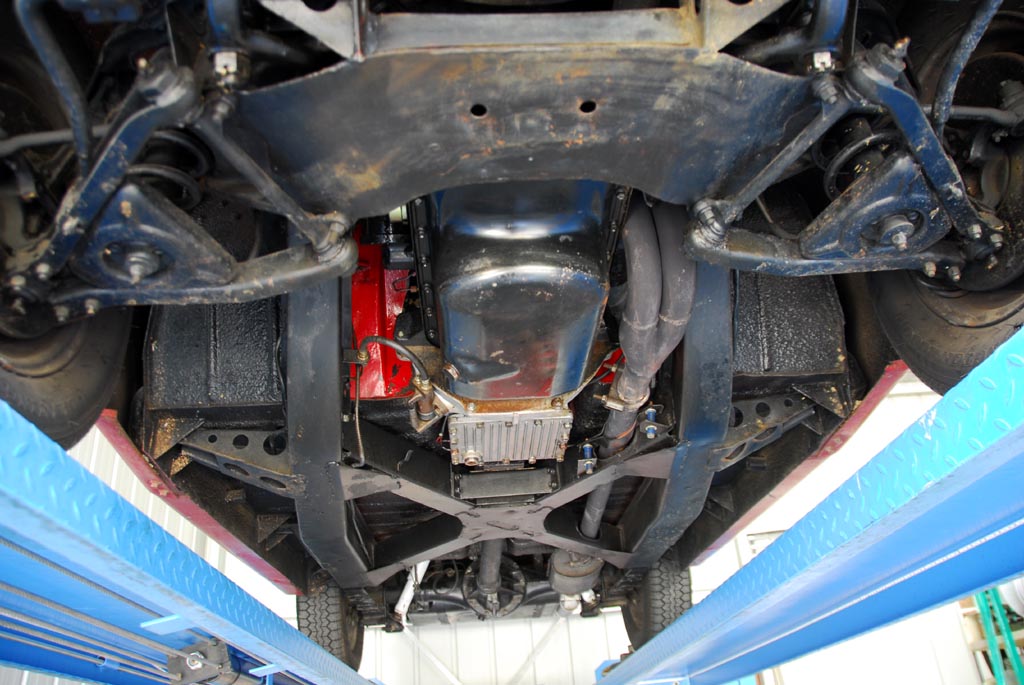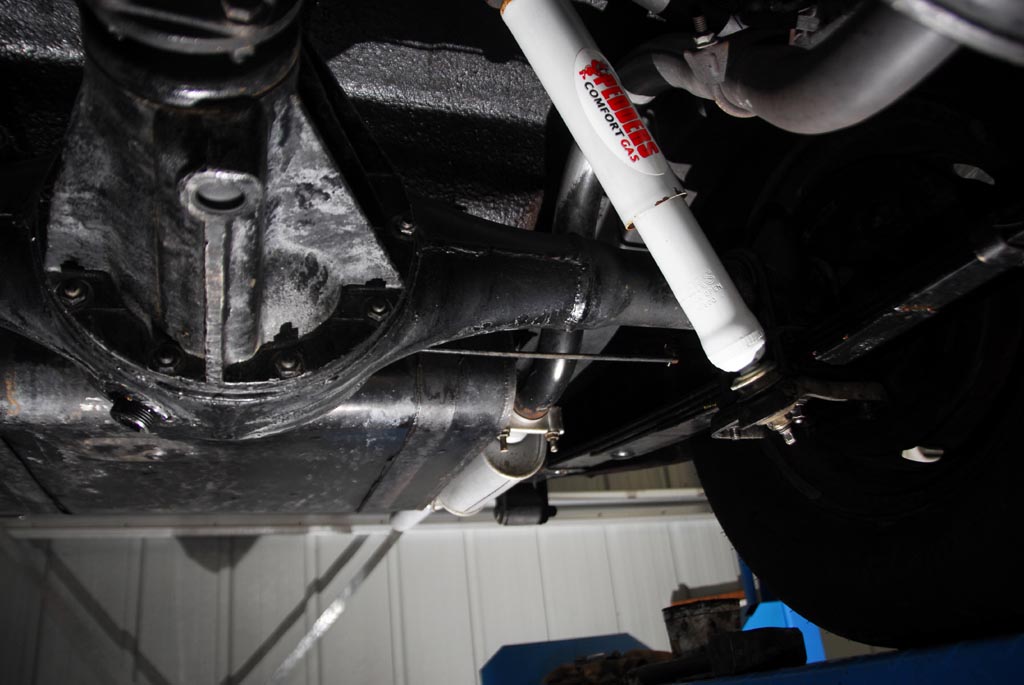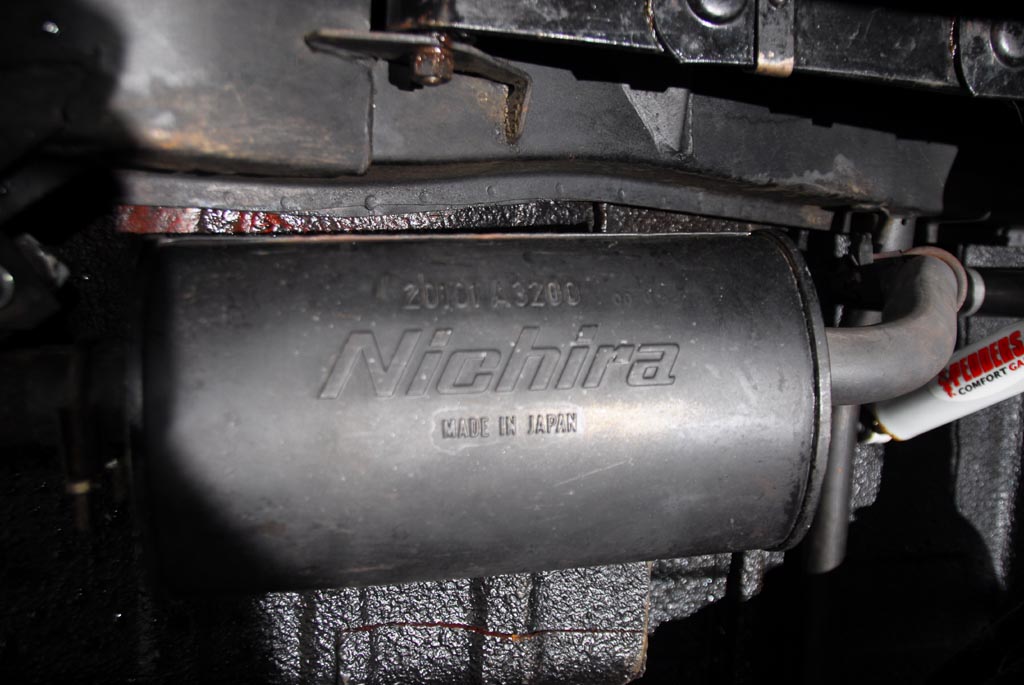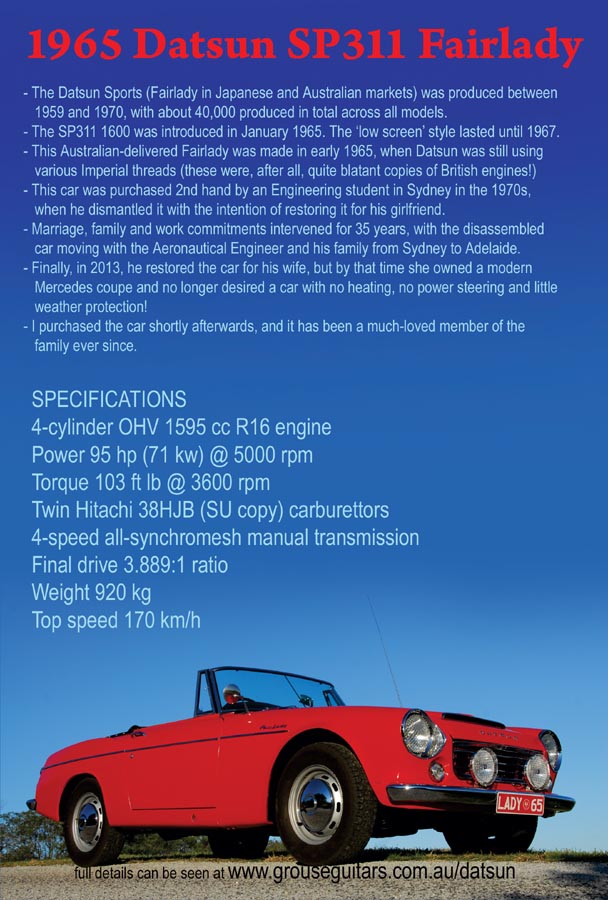1965 Datsun Fairlady 1600 SP311 Roadster
Our delightful SP311 1600 Datsun Fairlady Roadster dates from early 1965, when Datsun was still using various Imperial threads on some mechanicals, mixed with Metric threads elsewhere (after all, Japanese manufacturing essentially began by copying and then improving on designs from the Western world, and this car displays obvious cues from various British sports cars, while improving and blending them to result in a very charming and capable sports car that gave rise to a whole line of successful 'Z' cars).

We specifically wanted a low-screen (pre 1967½) Fairlady purely for aesthetics, even though as a 6' 2½" (188cm) solidly-built man my partner was likely to look somewhat comical in it - something that proved unarguably to be the case, and resulted in my much more petite self taking over custodianship of this much-loved roadster.
Originality is a big factor for us, and it took a long while to find a suitable car. However, after an interstate dash with an envelope of cash and high hopes, this little gem turned out to be the right car. It had been owned by the seller since the early 1970s, purchased when he was an Engineering student in Sydney. He drove it for a few years, before deciding to restore it fully for his then girlfriend.
The car was disassembled, and then marriage, family, and work commitments as an aeronautical engineer intervened for...35 years! All this time the car remained in storage, all carefully boxed and labelled and in secure, dry under-house storage, even during a few house moves during the decades. Eventually, the owner (now semi-retired and living in South Australia) decided to finally tackle the restoration and present the car to his wife. Better late than never!
However, with no power steering, decidedly non-modern feel and handling (more on that a little later), lack of heating and other creature comforts drivers of modern cars take for granted, she simply didn't like it, so she purchased a modern Mercedes coupe and the Fairlady was put on the market.
Handling on the drive back from South Australia to Victoria was 'interesting' (deadly), and electrical problems kept us on our toes, including random and spurious gauge readings for the whole tense journey.
While the paintwork (done in Acrylic rather than 2-pack, a preference we share with the previous owner) was quite well done (in period Ford Monza Red to facilitate easy availability and matching should any touchups be required in future), and trim was exceptionally well done (all to original pattern, but in high quality leather for a little bit of luxury), the car required a lot of 'sorting' once we got it home. After many frustrating hours entwined under the dash trying to determine what logic had been used when the loom was reinstalled, the entire wiring loom was removed, laid it out on a bench with a factory circuit diagram, carefully labelled where everything SHOULD go, and carefully reinstalled it, resulting in much more reliable electrics.
The precarious handling was traced (thanks, Lou Mondello!) to sagged rear springs that had been installed with the rear hangers upside down in an effort to gain some ride height, resulting in a much-too-high roll centre. A replacement pair of springs and a new set of rubbers (and correct installation!) were all that was needed.
Front suspension and much of the underbonnet area also benefitted greatly from simple disassembly and careful and correct reassembly.
The car is now enjoyed regularly, and is a delightfully responsive and 'fun' car to drive, as well as proving very economical. I am forever grateful that my partner was simply too big for the car, and I insist that the Triumph TR4 he purchased as a 'replacement' fits him much better, even though, interestingly, it is slightly smaller in each exterior dimension!
The full specifications of this car can be seen here.
